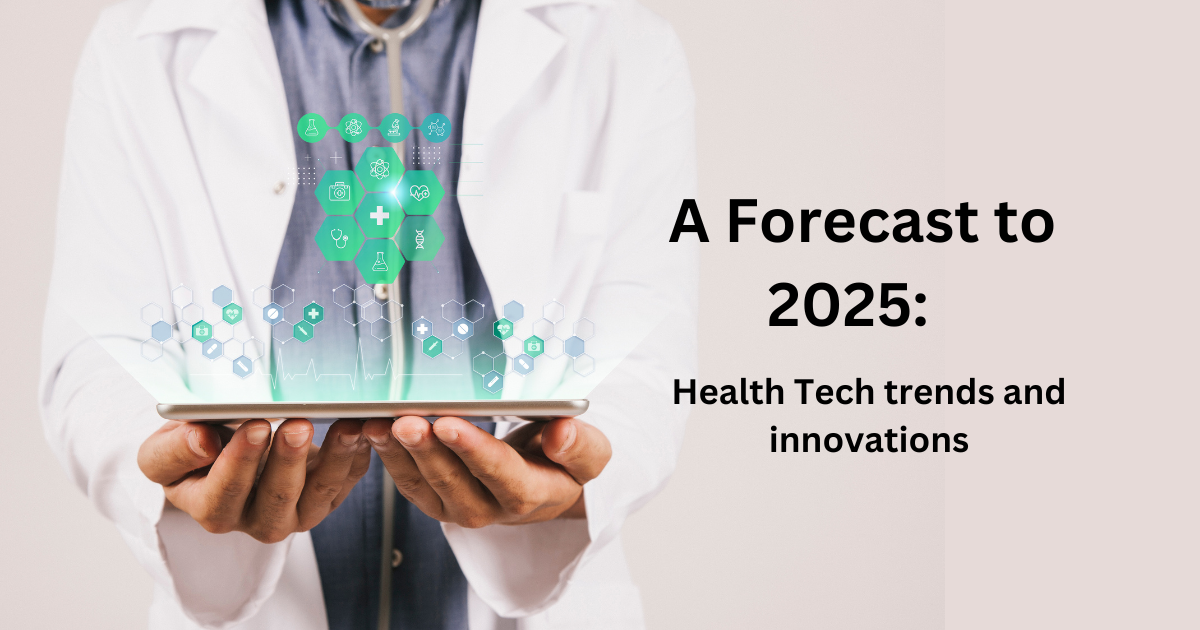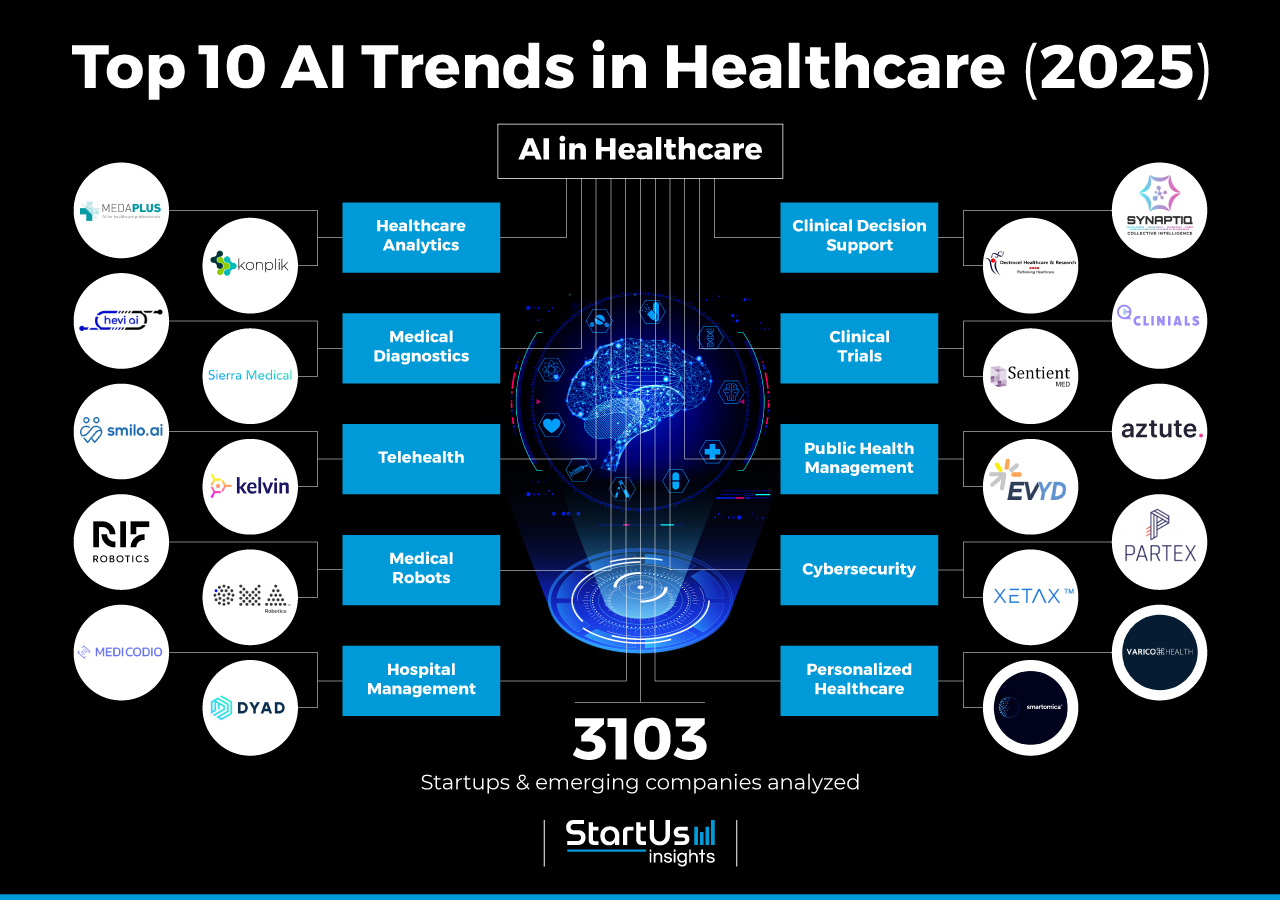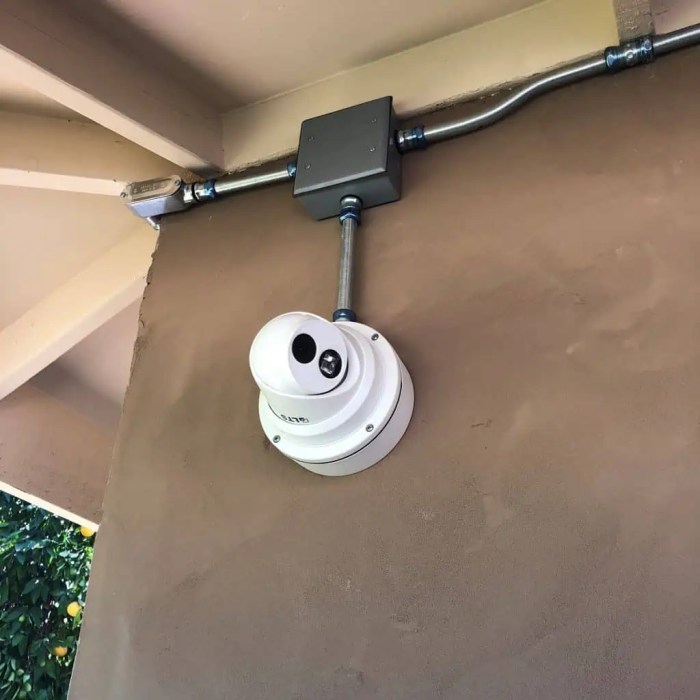Top 10 Health Tech Innovations to Watch in 2025
Top 10 health tech innovations to watch in 2025 sets the stage for this enthralling narrative, offering readers a glimpse into a story that is rich in detail and brimming with originality from the outset.
As we dive into the world of health tech innovations, we explore cutting-edge advancements that are poised to revolutionize healthcare as we know it.
Overview of Health Tech Innovations
Health tech innovations refer to the advancements in technology that are specifically designed to improve healthcare delivery, patient outcomes, and overall wellness. These innovations encompass a wide range of tools, devices, software, and systems that leverage technology to enhance the quality, efficiency, and accessibility of healthcare services.
Keeping up with technological advancements in healthcare is crucial as it allows for the continuous improvement of medical practices, diagnostics, treatment methods, and patient care. By embracing health tech innovations, healthcare providers can streamline processes, reduce errors, increase accuracy, and ultimately save lives.
Key Areas of Impact
- Telemedicine: Telemedicine allows for remote consultations, monitoring, and treatment, making healthcare more accessible to individuals in remote areas or those with mobility limitations.
- Artificial Intelligence (AI) in Healthcare: AI is revolutionizing healthcare through predictive analytics, personalized medicine, image analysis, and virtual health assistants.
- Wearable Health Tech: Wearable devices such as fitness trackers, smartwatches, and biosensors enable users to monitor their health metrics in real-time and take proactive measures to improve their well-being.
- Digital Health Records: Electronic health records (EHRs) facilitate seamless information sharing among healthcare providers, leading to better coordination of care and improved patient outcomes.
- Robotics in Surgery: Robotic-assisted surgery systems enhance precision, reduce invasiveness, and shorten recovery times for patients undergoing surgical procedures.
Wearable Health Tech
Wearable health tech devices have revolutionized how individuals monitor their health on a day-to-day basis. These devices are designed to track various health metrics, providing users with real-time data and insights into their well-being.
Types of Wearable Health Tech
- Smartwatches: These devices not only tell time but also track heart rate, activity levels, and even sleep patterns.
- Fitness Trackers: Specifically designed to monitor physical activity, such as steps taken, distance traveled, and calories burned.
- Health Monitors: Devices that measure vital signs like blood pressure, blood oxygen levels, and even ECG readings.
Transformation of Personal Healthcare Management
Wearable health tech is transforming personal healthcare management by empowering individuals to take control of their health proactively. By providing continuous monitoring and personalized insights, these devices enable users to make informed decisions about their lifestyle, leading to better health outcomes and early detection of potential health issues.
Artificial Intelligence in Healthcare
Artificial Intelligence (AI) is revolutionizing the healthcare industry by enhancing the efficiency, accuracy, and personalization of patient care. By leveraging AI technologies, healthcare systems can analyze vast amounts of data, streamline processes, and improve decision-making.
AI Applications in Healthcare
- Diagnostic Imaging: AI-powered algorithms can analyze medical images such as X-rays, MRIs, and CT scans to assist in early detection and diagnosis of diseases.
- Personalized Treatment: AI can customize treatment plans based on individual patient data, genetic information, and medical history to optimize outcomes.
- Predictive Analytics: AI algorithms can predict patient outcomes, identify high-risk individuals, and recommend preventive measures to improve population health.
- Virtual Health Assistants: Chatbots and virtual assistants powered by AI can provide 24/7 support, answer patient queries, schedule appointments, and offer medical advice.
Potential Benefits and Challenges of AI in Healthcare
- Benefits:
- Improved Diagnostic Accuracy: AI can help reduce human error and enhance diagnostic precision.
- Enhanced Patient Care: AI technologies can personalize treatment plans, improve patient engagement, and enhance overall healthcare experiences.
- Efficient Healthcare Delivery: AI can automate administrative tasks, optimize workflow processes, and reduce healthcare costs.
- Challenges:
- Data Privacy and Security: Protecting patient data from breaches and ensuring compliance with regulations are crucial challenges in AI implementation.
- Ethical Concerns: Issues related to bias in AI algorithms, accountability for decisions, and the impact on healthcare professionals need to be addressed.
- Integration and Adoption: Healthcare systems must overcome barriers such as interoperability, training staff, and gaining patient trust to successfully integrate AI technologies.
Telemedicine and Remote Monitoring

Telemedicine refers to the practice of providing healthcare remotely through the use of technology, such as video calls, phone consultations, and mobile apps. This innovative approach has revolutionized the way patients access medical services, especially in situations where in-person visits may not be possible or convenient.
Impact on Patient Access
- Increased accessibility: Telemedicine allows patients to consult with healthcare providers from the comfort of their own homes, eliminating the need for travel and reducing the barriers to seeking medical help.
- Convenience: Patients can schedule appointments at their convenience, reducing wait times and making healthcare more accessible to those with busy schedules.
- Improved follow-up care: Telemedicine enables healthcare providers to monitor patients remotely and provide ongoing support and guidance, improving patient outcomes.
Remote Monitoring in Chronic Disease Management
- Continuous monitoring: Remote monitoring devices, such as wearable sensors and smart devices, allow healthcare providers to track vital signs and health data in real-time, providing valuable insights into a patient's condition.
- Early intervention: By monitoring patients remotely, healthcare providers can detect changes or abnormalities in health metrics early on, allowing for timely interventions and preventing complications in chronic diseases.
- Improved patient engagement: Remote monitoring empowers patients to take an active role in managing their health, promoting self-care and adherence to treatment plans.
Virtual Reality and Augmented Reality in Healthcare

Virtual Reality (VR) and Augmented Reality (AR) are revolutionizing the healthcare industry by offering immersive experiences that can be utilized in various medical settings. These technologies create simulated environments that allow healthcare professionals to visualize complex medical concepts, perform procedures, and conduct training in a more interactive and engaging manner.
Benefits of VR and AR in Healthcare
- Enhanced Medical Training: VR and AR provide healthcare professionals with realistic simulations to practice surgeries, patient interactions, and emergency scenarios. This hands-on experience can improve skills and confidence.
- Patient Care: VR can be used to reduce pain and anxiety in patients during medical procedures by immersing them in calming environments. AR can assist surgeons during operations by overlaying important information on the patient.
- Remote Consultations: VR and AR technologies enable remote consultations and diagnoses, especially in rural or underserved areas. Healthcare providers can interact with patients virtually and assess their conditions.
Future Potential of VR and AR in Healthcare
- Surgical Planning: VR can be used to create personalized 3D models of patients' anatomy for surgeons to plan complex procedures more effectively. AR can overlay real-time information during surgeries, improving precision.
- Mental Health Therapy: VR is being explored as a tool for mental health therapy, allowing patients to confront fears and phobias in a controlled environment. AR can also support cognitive rehabilitation in patients with neurological disorders.
Blockchain in Healthcare
Blockchain technology is revolutionizing the way healthcare data is managed by providing a secure and transparent platform for sharing sensitive information.
Advantages of Using Blockchain for Secure Health Data Sharing
- Enhanced Security: Blockchain offers unparalleled security by encrypting data and creating a decentralized system that minimizes the risk of data breaches.
- Immutable Records: Once data is recorded on the blockchain, it cannot be altered or tampered with, ensuring the integrity and authenticity of health information.
- Interoperability: Blockchain enables seamless and secure sharing of health data between different healthcare providers, improving collaboration and patient care.
- Patient Empowerment: Patients have greater control over their medical records and can selectively share information with healthcare providers as needed.
Enhancing Transparency and Security in the Healthcare Industry
- Streamlined Data Management: Blockchain simplifies the process of managing and accessing health records, reducing administrative burden and improving efficiency.
- Auditability: Every transaction on the blockchain is logged and can be traced back to its origin, ensuring accountability and transparency in healthcare operations.
- Fraud Prevention: The transparent nature of blockchain helps in detecting and preventing fraudulent activities, safeguarding patient data and financial transactions.
- Data Integrity: By storing data in a secure and tamper-proof manner, blockchain ensures the accuracy and consistency of health information across the industry.
Personalized Medicine and Genomics
Personalized medicine is a healthcare approach that involves tailoring medical treatment to individual characteristics of each patient. This customization is based on factors like genetic makeup, lifestyle, and environmental influences. It aims to provide more precise and effective treatment strategies, ultimately improving patient outcomes and reducing adverse effects.
Impact on Patient Care
- Personalized medicine allows healthcare providers to deliver targeted therapies that are more likely to be effective for specific patients.
- By considering individual genetic variations, doctors can prescribe medications that are better suited to a patient's unique biology, leading to improved treatment outcomes.
- It helps in predicting a patient's response to certain treatments, minimizing trial and error in finding the most suitable approach.
Genomics in Healthcare
- Genomics, the study of an individual's genes and their interactions, plays a crucial role in personalized medicine by providing insights into genetic predispositions to diseases.
- Advancements in genomics have led to the development of targeted therapies and precision medicine, allowing for more effective treatment options.
- Genomic testing can identify genetic mutations that may increase the risk of certain diseases, enabling proactive measures to prevent or manage these conditions.
Challenges and Ethical Considerations
- One of the challenges of personalized medicine is the high cost associated with genetic testing and customized treatments, which may limit accessibility for some patients.
- There are concerns regarding privacy and consent issues related to the use and storage of genetic information for personalized medicine purposes.
- Ensuring equity in access to personalized treatments and addressing disparities in healthcare delivery based on genetic profiling are key ethical considerations in this field.
Robotics and Automation in Healthcare
Robotics and automation are revolutionizing healthcare by providing advanced tools and technologies that enhance precision and efficiency in various medical procedures. In surgical settings, these innovations play a crucial role in assisting surgeons and improving patient outcomes.
Role of Robotics in Surgical Procedures
- Robotic-assisted surgery allows for greater precision and control during complex procedures.
- Surgeons can perform minimally invasive surgeries with the help of robotic systems, leading to faster recovery times for patients.
- Robotics enable surgeons to access hard-to-reach areas within the body with enhanced visualization capabilities.
Examples of Robotics Enhancing Precision and Efficiency
- The da Vinci Surgical System is a widely used robotic platform that assists in various surgical specialties, such as urology, gynecology, and general surgery.
- Radiosurgery robots deliver targeted radiation therapy for cancer treatment with sub-millimeter accuracy, minimizing damage to surrounding healthy tissue.
- Robot-assisted rehabilitation devices help patients recover from injuries or surgeries through tailored exercises and feedback for optimal recovery.
Future Possibilities of Robotics and Automation in Healthcare
- Robotic exoskeletons could assist individuals with mobility impairments in walking and performing daily activities independently.
- Automated pharmacy systems can streamline medication dispensing processes, reducing errors and improving medication adherence.
- Teleoperated robotic systems may enable remote surgeries, allowing expert surgeons to perform procedures on patients in distant locations.
Health Data Analytics

Health data analytics plays a crucial role in improving patient outcomes by leveraging data insights to enhance healthcare delivery, personalize treatments, and optimize operational efficiency.
Identifying Trends and Patterns in Healthcare Data
Data analytics in healthcare enables the identification of trends and patterns within vast amounts of health data. By analyzing data from various sources such as electronic health records, wearables, and genetic information, healthcare providers can uncover valuable insights to make informed decisions and improve patient care.
- Health data analytics helps in monitoring population health trends, identifying disease outbreaks, and assessing the effectiveness of interventions.
- By analyzing historical patient data, healthcare professionals can predict the likelihood of future health events, allowing for proactive and preventive measures.
- Identifying patterns in treatment outcomes can lead to the development of personalized treatment plans tailored to individual patient needs.
Potential of Predictive Analytics in Disease Prevention
Predictive analytics utilizes data to forecast future outcomes, enabling healthcare providers to anticipate and prevent diseases before they occur. This proactive approach to healthcare can significantly impact patient well-being and reduce healthcare costs.
Predictive analytics can help in identifying high-risk patients who may benefit from early interventions or targeted preventive measures.
- By analyzing patient data and risk factors, predictive analytics can predict the likelihood of developing certain diseases, allowing for timely interventions and lifestyle modifications.
- Health data analytics can assist in forecasting patient outcomes post-treatment, enabling healthcare providers to optimize care pathways and improve recovery rates.
- Through predictive modeling, healthcare organizations can allocate resources more efficiently, optimize staffing levels, and enhance overall operational performance.
3D Printing in Healthcare
3D printing has been a game-changer in the healthcare industry, revolutionizing the production of medical devices and implants. This technology allows for the creation of custom-made solutions that perfectly fit the patient's anatomy, leading to better treatment outcomes and increased patient satisfaction.
Benefits of Using 3D Printing in Personalized Healthcare Solutions
- Customization: 3D printing enables the design and production of personalized medical devices and implants tailored to individual patients, improving comfort and functionality.
- Cost-effectiveness: By eliminating the need for mass production and reducing material waste, 3D printing can lower costs associated with healthcare devices and treatments.
- Shorter Lead Times: Traditional manufacturing processes can be time-consuming, but 3D printing allows for rapid prototyping and production, speeding up the delivery of healthcare solutions.
- Enhanced Patient Care: The ability to create patient-specific models for surgical planning and training enhances surgical precision and reduces risks during procedures.
Future Applications of 3D Printing in Healthcare
- Organ Printing: Researchers are exploring the possibility of using 3D printing technology to create functional human organs for transplantation, potentially addressing the organ shortage crisis.
- Drug Development: 3D printing can be used to produce customized drug delivery systems tailored to individual patient needs, improving treatment efficacy and compliance.
- Biofabrication: Advancements in 3D printing techniques are paving the way for the creation of bioengineered tissues and organs, offering new possibilities for regenerative medicine.
Ending Remarks
In conclusion, the top 10 health tech innovations to watch in 2025 promise a future where technology and healthcare converge to enhance patient outcomes and transform the way we approach wellness.
Essential Questionnaire
What are the potential benefits of using artificial intelligence in healthcare?
AI can improve diagnostics accuracy, enhance personalized treatment plans, and streamline administrative tasks, ultimately leading to better patient outcomes.
How is wearable health tech transforming personal healthcare management?
Wearable devices can monitor vital signs, track fitness levels, and provide real-time health data, empowering individuals to take control of their well-being proactively.
What is the role of blockchain in healthcare data management?
Blockchain ensures secure and transparent sharing of health data, reducing the risk of data breaches and enhancing interoperability among healthcare providers.




